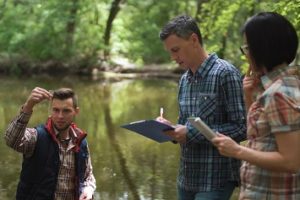One of the Trump administration’s new approaches to regulatory enforcement is an enhanced effort to engage citizens in surveillance and monitoring. While the prospect of fewer agency officials coming around sounds inviting, the idea of folks with little or no expertise messing with scientific efforts that can affect your operations can be truly frightening for an environment, health, and safety (EHS) manager.
In a new initiative, the U.S. Environmental Protection Agency (EPA) has selected projects meant to address environmental and human health problems in 14 states across all 10 regions through partnerships between the EPA and states. The projects use what the Agency calls “innovative approaches,” which we take to mean fewer resources from the federal government. Some of the projects use citizen science and crowdsourcing as a way to address specific environmental priorities. This article will look at a few of these projects and give you some tips for actions you can take to protect the integrity of your facility. Even if these projects do not affect your facility operations, these tips can also help you interact with your community in a way that reflects well on the company.
Continuous Water Monitoring in Georgia
Although there are currently technologies that make “real-time” continuous monitoring of water quality possible, most of these technologies are too expensive for widespread use according to the EPA. EPA Region 4 and the Georgia Environmental Protection Division (EPD) intend to work with citizen scientists to build low-cost water quality sensors that allow for continuous data collection of key water quality parameters.
Aside from “citizen scientists” building these “low-cost” sensors, the second part of the project involves volunteer monitoring groups deploying these sensors in a continuous monitoring network. The EPA will then evaluate the sensors’ performance as compared to standard equipment.
Action tip. Make sure that you have your ears tuned to what is going on in your community and be part of, if not a leader in, any efforts to tackle environmental issues. If your facility is in a community where one of these low-cost sensors will be used, try to be involved in the development of the sensor. Trying to develop something at a low cost can lead to cutting corners, which could result in incorrect water quality data being collected from waterbodies critical to your facility operations. As an EHS manager, you have important insight and knowledgeable staff that can help ensure that sensors developed through this or similar projects are practical and efficient, and that the data collected truly reflect existing water quality.
Analyzing Videos in the Great Lakes
In another project, the EPA has said that analyzing underwater video footage to monitor invasive species in the Great Lakes has proven too resource-intensive. So the solution, according to the EPA and the Michigan and Wisconsin environmental agencies, is to engage citizen scientists to analyze the videos for habitat characteristics and invasive species in order to help reduce current knowledge gaps.
This project will develop and use a web application to test the ability of citizen scientists to evaluate 1,000 underwater videos of the Great Lakes by comparing their analysis to previously collected expert analysis. The intent is to demonstrate the effectiveness of citizen scientists’ participation in environmental assessment and potentially reduce costs by two-thirds, compared to analysis by experts.
This is almost breathtaking in its stated intent and dismissal of expert analysis.
Action tip. If possible, be in on the development of this web application. Be familiar with all the outreach tools the EPA is using to encourage public participation. Make sure you are available to help interpret any information or misinformation circulating in your community as the result of the development of tools that could replace the knowledge environmental experts have honed through education and practical experience.
Check tomorrow’s Advisor for two other projects for which the EPA intends to use citizen scientists to collect and analyze environmental data.

